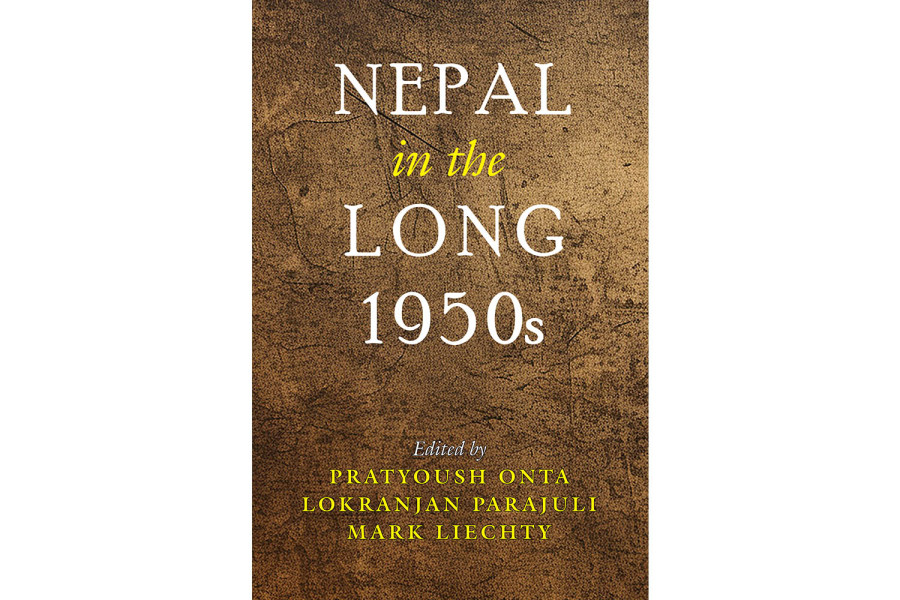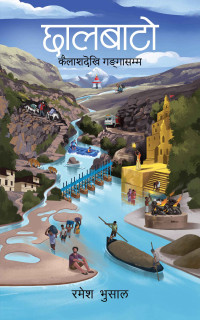Books
Understanding the roots of modern Nepal
‘Nepal in the Long 1950s’ uncovers how global powers and regional dynamics influenced the country’s political and social landscape.
Rishika Dhakal
When studying history, you tend to overlook external factors influencing major events, and instead mostly focus on the interplay of internal events. I say this with certainty because reading ‘Nepal in the Long 1950s’ made me reflect on one thing: the skeletal understanding of Nepal that we, as young students, gained from our textbooks.
Edited by historian Pratyoush Onta, historical sociologist Lokranjan Parajuli and anthropologist Mark Leichty, this book is a collection of 10 research papers by scholars from different professions.
The book is divided into two sections. The first, ‘Nepal in the World,’ has six research papers that situate cultural, social, and political developments within Nepal in the larger regional and global contexts. The second section, ‘The World in Nepal,’ packs four research articles that explore the dialectic between Nepal’s internal struggles and the broader global forces influencing them.
The book’s objective is to help readers understand the history of Nepal in light of developments beyond its border in the 1950s. It discusses the impact of significant global events such as India’s Independence in 1947, the Communist Victory in China in 1949, the Korean War of 1950-1953, the Cold War and more, all of which brought about tectonic shifts and changes in Nepal.
The book delves into various themes, such as modernisation, postcolonial aspirations, the entanglement of local and global forces, identity and nation-building, health care and humanitarian encounters, and tourism and cultural exchanges.
It also answers questions such as why BP Koirala’s development plan was full of contradictions, the role of the mother queens Kanti Rajya Laxmi and Ishwari Rajya Laxmi in building Tribhuvan University, why the Birta Abolition Act benefited the Rana rulers, how a local tea shop became a nexus for reflecting the emerging social, cultural and political trends during the transitional period of the 1950s, how the land reform initiative was used to counter Communist China’s populist appeal in Asia and why the the initial American malaria eradication plan failed.
All chapters are set against the backdrop of the end of the 104-year-old Rana rule. In this period, often referred to as the ‘Forbidden Land’, Nepal was taking baby steps to adapt to global changes. The country was like a blank slate, and actions taken during this period would be crucial in charting its socio-political and economic reality. Hence, foreign aid and assistance poured in to drive development. However, as Jeremy Rappleye notes in his paper on the advent of modern education in Nepal, “The aid program was no longer about education, it was once again about meeting foreign policy objectives.”
With this, the sole responsibility of designing Nepal’s education system was given to the Americans where Hugh B. Wood, the then American advisor to Nepal, emerged as a key figure. According to Rappleye, Wood was integral in shaping Nepal’s modern education system. Driven by his own assumptions and the belief that he was bringing the ‘gifts of universal civilisation’ to Nepal, Wood introduced Western style education, which continues till today.
All the ongoing discussion surrounding decolonisation takes root in Wood’s contribution. Whether it's questioning the practice of getting punished for speaking Nepali in school or glorifying the western culture at the expense of dismissing one’s own traditions as superstitions, it is no wonder that we find ourselves deeply engaged in this discourse.
In contrast to Wood’s views, Bal Chandra Sharma had a different take on education. Sharma believed, “our intellectual efforts should reflect our material life, and our material life should contain the deep colours of our art and experiences.”
Onta in his article, ‘Visions of Rejuvenating Nepal through Knowledge Creation and Circulation: Ambitious Founders and the Short life of Nepal Sanskritik Parishad’ describes the life story of unrecognised visionaries of Nepal such as Bal Chandra Sharma, Isvar Baral and Kedar Man Vyathit. These figures are credited for establishing the Nepal Sanskritik Parishad (NSP), an organisation dedicated to social research in Nepal in the 1950s.
Drawing from their experiences during their time in India from Indian anti-colonial movements, academic institutions in Banaras and anti-Rana political activism, they aimed to establish social research deeply rooted in history, art and literature for redefining the concept of ‘Nepaliness’ following the end of the Rana regime. Although the NSP was short-lived, it created a space for intellectual collaboration and high-quality publications, pretty much in the mode of present-day Martin Chautari.
As a reader, one of the exciting parts of this article was Kaiser SJB Rana’s love for books and his collection. Apart from providing financial assistance to run the Nepal Sanskritik Parishad, the Kaiser Library he established, which continues to this day in Lazimpat, was his great contribution to Nepal’s intellectual enrichment.
The next section of the book discusses roles played by foreign specialists and their programs in reshaping Nepal during the long 1950s. In the article, ‘Front Line of the Cold War: The US and Point Four Development Programs in Cold War Nepal (1950-1953)’, Thomas Robertson explains how Nepal became a battleground for the ambitions of powerful nations, particularly the United States.
The US introduced its Point Four Program to bring neocolonial development to Nepal and create a psychological shift by encouraging Nepalis to rely on American support. It did so by painting communism in a negative light-especially after China annexed Tibet.
Gradually, the concept of development became entangled with material progress, stripping it of its socio-economic realities. Bandana Gyawali’s article ‘From Development to Bikas: Nepal’s Transition to Democracy and the Emergence of a Concept’ further explores this shift. As a result, local improvements were limited.
But reading the second section made me realise that health and tourism were the areas that benefitted from external interventions. In health, despite Nepal’s historical weariness of Christian missionaries since the time of Prithivi Narayan Shah, it was due to medical missionaries and foreign visitors that medical facilities began to emerge in Nepal.
The book also paints a picture of historical casualties such as the flood of 1954, which stirred a series of internal struggles, particularly because of the rift between the then Prime Minister Matrika Prasad Koirala and ministers like Tanka Prasad Acharya. This ultimately led to the reinstatement of monarchy.
Similarly, the book's final chapter, with its vivid description of the clean Kathmandu Valley, makes readers nostalgic of the Kathmandu of 1950s while introducing Boris Lissanevitch, who is widely regarded as the father of Nepal’s tourism. Lissanevitch, with the establishment of Royal Hotel, the first hotel in Nepal, set the stage for the emergence of other hotels in Kathmandu, gradually laying the foundation for tourism in the country.
The book is insightful as it draws on a wide range of archives and photographs sourced from near and far. Some of these sources are: USAID Library (Washington DC), Harry S Truman Presidential Library (Missouri, US), Divinity School Library at Yale University, Martin Chautari Library, private newspaper Awaj, Microfilms of Gorkhapatra and other interviews.
The book was particularly useful for me as a social science student. Yet it would be of value to anyone interested in unearthing the factors that shaped Nepal’s modern development starting in the early decades of the 20th century.
Nepal in the long 1950s
Editors: Pratyoush Onta, Lokranjan Parajuli, Mark Liechty
Publisher: Martin Chautari
Year: 2024




 10.12°C Kathmandu
10.12°C Kathmandu










